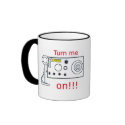There are all kinds of interference out there. From atmospheric to intentional all will be experienced by amateurs at one time or another.
1. Atmospheric: Sometimes, there is nothing you can do except fight through it. Try adjusting your attenuator and noise blanker settings. If you have a Digital signal processor, try adjusting for least noise or highest quality desired signals.
2 Interference from nearby electrical activity. Your interference may be buzzing, whining, whirring or intermittent regularly spaced shushes. These all indicate something man-made. Power/phone lines, vehicles, nearby blow driers and other nearby devices such as computer/monitors, fans, air conditioners, or other communication equipment could be the culprit.
Try your noise blanker, attenuators and digital processors again to help. If unsuccessful, try turning things off and unplugging them while listening to the interference. If you cut power to something and the noise stops, you found the trouble.
I experienced interference by a nearby CB enthusiast. He had power way outside the legal limit, and he was causing interference through the entire HF spectrum in my shack. I found the frequency the guy was on and let him know what he was doing. I let him know continued interference by his CB operations would result in my notifying the FCC. As predicted, he ceased his high power operation.
3. Intentional interference: This might be some knuckle head purposely leaning on his cw key or making some other noise disrupting the regular flow of traffic. In most cases, the worst thing you could do is let the jammer know you are annoyed.
Jammers seek a reaction which will reinforce those ignorant actions. That said, sometimes it’s effective for everyone to simply stop transmitting for a few minutes. Nets I have been on have done this and the interference ceased.
Another strategy I’ve been a part of is while the guy is keyed up (jamming), someone said, “Let’s go to ___ MHz. A net I was on did this and successfully continued with the net on another frequency.
This article is by no means the end-all of countering interference. Just be aware that we, as ham radio operators, are not helpless when it comes to interference. From modern radios with attenuators and digital filtering capabilities to strategies for dealing with manmade interference, amateur radio operators can work to minimize disruptions.
12/17/16 Wood Cutting, Devil Worship interruption, Deal not Honored
-
Interesting dream about a kid with long reddish-brown hair.
He looked like he was around 16 years old. Strange thing about this kid
is that at times in ...
9 years ago















No comments:
Post a Comment